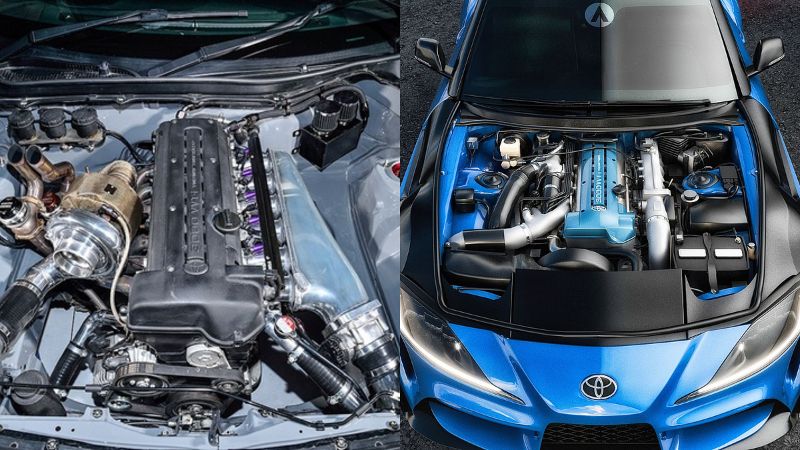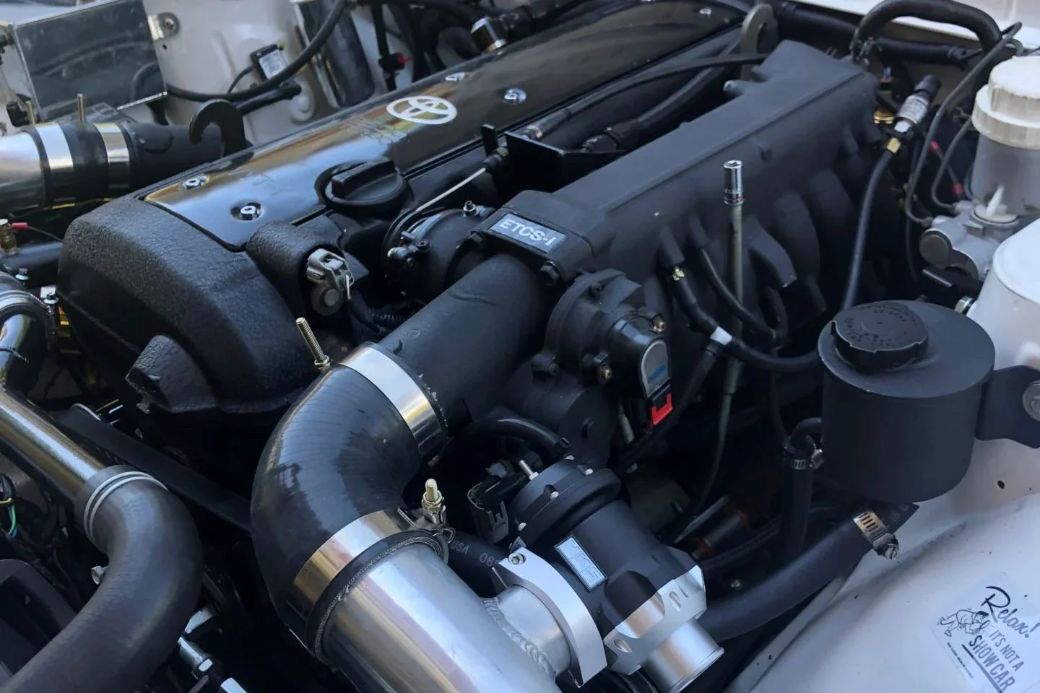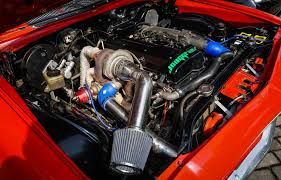Maintaining the performance and longevity of any high-performance engine requires keen attention to detail, especially when it comes to identifying and addressing potential 2JZ-GTE Engine Issues. For car enthusiasts, the 2JZ-GTE engine is a renowned powerhouse, celebrated for its robust construction and exceptional tuning potential. However, even this legendary engine is not immune to common problems that can impact its performance and reliability.
Understanding the common symptoms of engine issues and their respective solutions is crucial for any 2JZ-GTE owner. Early detection and prompt action can prevent minor issues from escalating into major repairs, ensuring that your engine runs smoothly and efficiently. In this article, we will explore the most common symptoms associated with the 2JZ-GTE engine, provide detailed solutions, and offer tips for preventive maintenance.
What is the 2JZ-GTE Engine?
The 2JZ-GTE engine is a 3.0-liter inline-six turbocharged engine produced by Toyota. It gained fame as the powerhouse behind the Toyota Supra MKIV, earning a reputation for its durability, performance, and tuning capabilities. This engine has become a favorite among car enthusiasts and tuners, capable of handling significant power increases with proper modifications and maintenance.
Importance of Early Detection and Maintenance
Identifying symptoms of engine issues early can save time, money, and headaches. Regular maintenance and timely interventions ensure that the 2JZ-GTE engine remains in peak condition, delivering the performance and reliability it is known for. By understanding the common symptoms and their solutions, you can take a proactive approach to engine care, preventing costly breakdowns and extending the life of your engine.
Scope of the Article
In this article, we will cover:
- An overview of common symptoms associated with the 2JZ-GTE engine.
- Detailed descriptions and solutions for specific issues such as misfiring, overheating, oil leaks, and poor fuel economy.
- Diagnostic tools and techniques to accurately identify and address engine problems.
- Best practices for preventive maintenance to keep your engine running smoothly.
By the end of this guide, you will be equipped with the knowledge to diagnose and resolve common 2JZ-GTE engine issues, ensuring optimal performance and longevity. Whether you are a seasoned car enthusiast or a new owner, this comprehensive guide will help you maintain your engine with confidence.
Overview of Common Symptoms
Every engine, regardless of its performance pedigree, can experience issues over time. Recognizing the symptoms early on can prevent minor problems from becoming major headaches. The 2JZ-GTE engine, while robust and reliable, is no exception. Here are some common symptoms that indicate potential issues with this legendary engine:
General Symptoms of Engine Issues
- Unusual Noises: Clunking, knocking, or whining noises from the engine bay can indicate various issues, from loose components to internal engine damage.
- Check Engine Light: This is the most obvious indicator that something is wrong. The check engine light can be triggered by a range of issues, from minor sensor malfunctions to serious mechanical problems.
- Performance Loss: If your engine feels less powerful or responsive than usual, it could be a sign of underlying issues.
- Smoke from the Exhaust: Different colors of smoke can indicate different problems. Blue smoke often means burning oil, white smoke can indicate coolant leaks, and black smoke usually points to a rich fuel mixture.
- Fluid Leaks: Any signs of oil, coolant, or fuel leaks under the car should be investigated immediately.
Importance of Early Detection
Early detection of these symptoms allows for prompt action, potentially saving you from costly repairs down the road. Regularly monitoring your engine’s performance and addressing issues as soon as they arise ensures the longevity and reliability of the 2JZ-GTE engine.
Preliminary Assessment
Before diving into detailed diagnostics, a preliminary assessment can help identify the general area of concern. This involves visually inspecting the engine bay, checking fluid levels, and using an OBD II scanner to read any stored Diagnostic Trouble Codes (DTCs). These initial steps provide valuable insights into the nature of the problem, guiding further diagnostic efforts.
Specific Symptoms and Their Solutions
Symptom 1: Misfiring
- Description and Causes: Misfiring occurs when one or more cylinders fail to ignite the fuel-air mixture properly. Common causes include faulty spark plugs, ignition coils, or fuel injectors.
- Diagnostic Procedures: Use an OBD II scanner to read the DTCs. Common codes related to misfiring include P0300 (random misfire) and P030X (specific cylinder misfire). Inspect the spark plugs and ignition coils for wear or damage.
- Solutions and Preventive Measures: Replace worn spark plugs and faulty ignition coils. Ensure that the fuel injectors are clean and functioning correctly. Regular maintenance and timely replacement of ignition components can prevent misfiring.
Symptom 2: Overheating
- Description and Causes: Overheating can be caused by a malfunctioning thermostat, radiator issues, or low coolant levels.
- Diagnostic Procedures: Check the coolant level and inspect the radiator and hoses for leaks or blockages. Use an OBD II scanner to check for codes related to the cooling system, such as P0115 (coolant temperature sensor circuit malfunction).
- Solutions and Preventive Measures: Replace the thermostat if it is faulty. Flush and refill the cooling system if there are blockages. Regularly check and maintain coolant levels to prevent overheating.
Symptom 3: Oil Leaks
- Description and Causes: Oil leaks can result from degraded gaskets, seals, or oil pan issues.
- Diagnostic Procedures: Visually inspect the engine for signs of oil leaks. Check the oil level and look for oil on the ground or around the engine.
- Solutions and Preventive Measures: Replace damaged gaskets and seals. Ensure the oil pan is properly secured and not damaged. Regular oil changes and using the correct oil type can help prevent leaks.
Symptom 4: Poor Fuel Economy
- Description and Causes: Poor fuel economy can be caused by a range of issues, including dirty air filters, faulty oxygen sensors, or improper fuel injector operation.
- Diagnostic Procedures: Use an OBD II scanner to check for codes related to the fuel system, such as P0171 (system too lean) or P0172 (system too rich). Inspect the air filter and fuel injectors.
- Solutions and Preventive Measures: Replace dirty air filters and faulty oxygen sensors. Clean or replace fuel injectors if necessary. Regular maintenance and using high-quality fuel can improve fuel economy.
Diagnostic Tools and Techniques
To effectively diagnose and resolve 2JZ-GTE engine issues, having the right tools and knowledge is essential. Here are the key diagnostic tools and techniques you’ll need:
Essential Diagnostic Tools for the 2JZ-GTE Engine
- OBD II Scanner: A crucial tool for reading Diagnostic Trouble Codes (DTCs) and real-time engine data.
- Multimeter: Useful for testing electrical components and circuits.
- Compression Tester: Helps check the health of the engine’s cylinders.
- Fuel Pressure Gauge: Used to test the fuel system pressure.
- Vacuum Gauge: Helps diagnose issues with the intake system and vacuum leaks.
How to Use OBD II Scanners and Other Diagnostic Equipment
- Connecting the OBD II Scanner: Locate the OBD II port under the dashboard, connect the scanner, and turn on the ignition. Follow the scanner’s instructions to retrieve DTCs and view real-time data.
- Using a Multimeter: Test the voltage, resistance, and continuity of electrical components. For example, check the battery voltage or test the resistance of ignition coils.
- Compression Testing: Remove the spark plugs and connect the compression tester to each cylinder. Crank the engine and record the pressure readings. Compare them to the manufacturer’s specifications.
- Fuel Pressure Testing: Connect the fuel pressure gauge to the fuel rail and turn on the ignition. Compare the pressure readings to the manufacturer’s specifications.
- Vacuum Testing: Connect the vacuum gauge to a vacuum port on the intake manifold. Start the engine and observe the readings to diagnose issues such as vacuum leaks or a malfunctioning EGR valve.
Step-by-Step Guide to Diagnosing Common Issues
- Preliminary Inspection: Perform a visual inspection and check fluid levels. Use an OBD II scanner to read any stored DTCs.
- Focused Diagnostics: Based on the symptoms and DTCs, use the appropriate diagnostic tools to investigate further. For example, if you suspect a misfire, check the spark plugs, ignition coils, and fuel injectors.
- Repair and Re-test: After identifying and fixing the issue, clear the DTCs and perform a re-test to ensure the problem is resolved.
Case Studies and Examples
- Case Study 1: Diagnosing a misfire issue. The OBD II scanner showed a P0303 code, indicating a misfire in cylinder 3. Upon inspection, a faulty ignition coil was found and replaced, resolving the issue.
- Case Study 2: Addressing an overheating problem. The engine was overheating due to a low coolant level. After inspecting the cooling system, a small leak was found in the radiator hose. Replacing the hose and refilling the coolant fixed the problem.
Best Practices for Preventive Maintenance
To keep the 2JZ-GTE engine running smoothly, regular maintenance is essential. Here are some best practices to follow:
Importance of Regular Maintenance
Regular maintenance helps prevent issues before they become serious problems. It ensures the engine operates efficiently and extends its lifespan.
Tips for Maintaining the 2JZ-GTE Engine
- Regular Oil Changes: Change the engine oil and filter according to the manufacturer’s recommendations. Use high-quality oil to ensure optimal lubrication.
- Cooling System Maintenance: Regularly check the coolant level and inspect the radiator, hoses, and thermostat. Flush and refill the cooling system as needed.
- Air Filter Replacement: Replace the air filter regularly to ensure proper airflow and engine performance.
- Spark Plug and Ignition Coil Maintenance: Inspect and replace spark plugs and ignition coils as needed to prevent misfires and maintain performance.
- Fuel System Care: Use high-quality fuel and periodically clean the fuel injectors to maintain optimal fuel delivery.
Integrating Visual Inspections and DTC Analysis
- Visual Inspections: Regularly inspect the engine bay for signs of leaks, wear, and damage. Look for any loose or damaged components.
- DTC Analysis: Use an OBD II scanner to check for DTCs regularly. Address any issues indicated by the codes promptly.
Scheduling and Record-Keeping
- Maintenance Schedule: Follow a consistent maintenance schedule. Use the vehicle’s service manual as a guide.
- Record-Keeping: Keep detailed records of all maintenance and repairs. This helps track the engine’s condition and ensures all necessary tasks are completed.
By following these best practices, you can keep your 2JZ-GTE engine in top condition, ensuring reliable performance and longevity.
Conclusion
In conclusion, understanding the common symptoms and solutions for the 2JZ-GTE engine issues is essential for maintaining its performance and longevity. The 2JZ-GTE engine, while renowned for its durability and power, still requires regular maintenance and prompt attention to any issues that arise. By recognizing the signs of common problems such as misfiring, overheating, oil leaks, and poor fuel economy, and knowing how to address them, you can ensure your engine remains in peak condition.
Regular diagnostics using tools like OBD II scanners, combined with visual inspections and preventive maintenance, form the foundation of effective engine care. Whether you are a seasoned car enthusiast or new to the 2JZ-GTE engine, these practices will help you avoid costly repairs and enjoy the full potential of your vehicle.
If you own a vehicle with a 2JZ-GTE engine, start by integrating regular diagnostics and maintenance into your routine. Invest in quality diagnostic tools, perform visual inspections frequently, and address any issues promptly. Keeping detailed records of all maintenance activities will also help track the engine’s condition over time.
Begin today by conducting a thorough inspection of your 2JZ-GTE engine. Use an OBD II scanner to check for any stored Diagnostic Trouble Codes (DTCs), and follow the solutions outlined in this guide to address any issues you find. By staying proactive, you can ensure your engine delivers the performance and reliability it was designed for, mile after mile.
Frequently Asked Questions (FAQ)
What are the most common symptoms of issues with the 2JZ-GTE engine?
Common symptoms include misfiring, overheating, oil leaks, poor fuel economy, unusual noises, check engine light activation, and smoke from the exhaust. Recognizing these signs early can help prevent major engine problems.
How can I diagnose a misfiring issue in my 2JZ-GTE engine?
Use an OBD II scanner to retrieve Diagnostic Trouble Codes (DTCs) such as P0300 or P030X, which indicate misfires. Inspect the spark plugs, ignition coils, and fuel injectors for wear or damage. Replace any faulty components to resolve the misfire.
What should I do if my engine overheats?
First, check the coolant level and inspect the radiator and hoses for leaks or blockages. Use an OBD II scanner to check for cooling system-related codes like P0115. Replace the thermostat if it is faulty and ensure the cooling system is flushed and refilled as needed.
How can I prevent oil leaks in the 2JZ-GTE engine?
Regularly inspect the engine for signs of oil leaks and check the oil level. Replace degraded gaskets and seals, and ensure the oil pan is properly secured. Regular oil changes and using the correct oil type can also help prevent leaks.
What are the best practices for maintaining good fuel economy in the 2JZ-GTE engine?
Replace dirty air filters and faulty oxygen sensors, clean or replace fuel injectors as needed, and use high-quality fuel. Regular maintenance and addressing any fuel system-related DTCs promptly will help maintain optimal fuel economy.
By following these guidelines and incorporating regular maintenance and diagnostics into your routine, you can keep your 2JZ-GTE engine in top condition, ensuring reliable performance and longevity.


